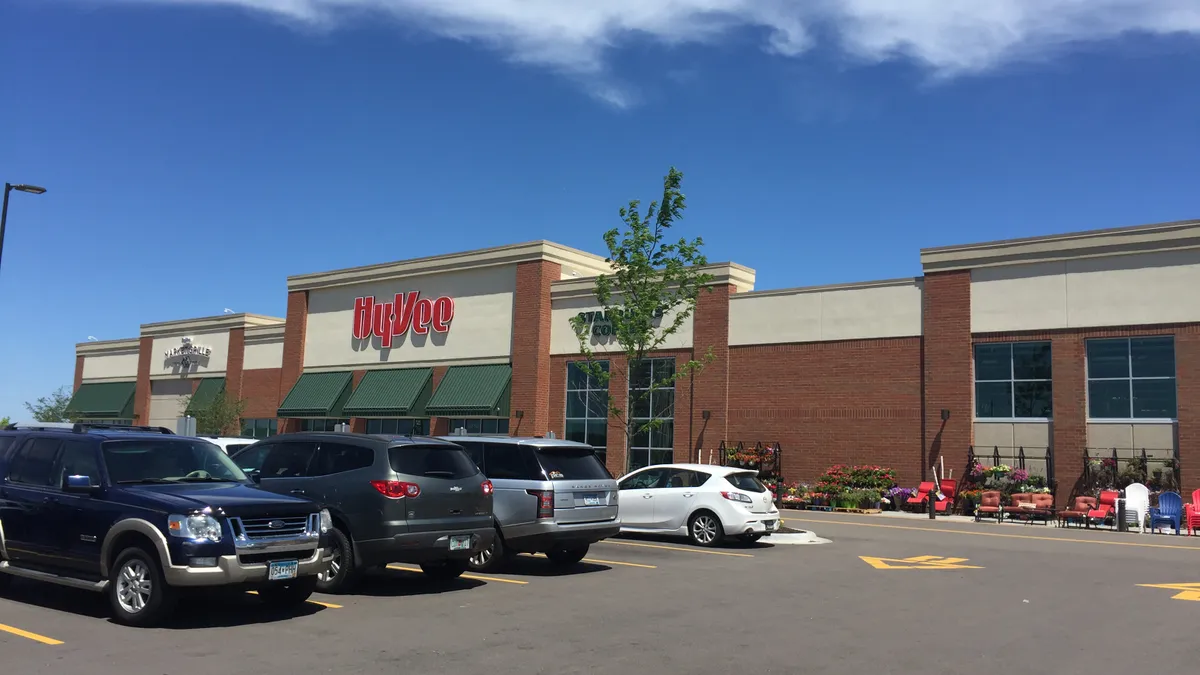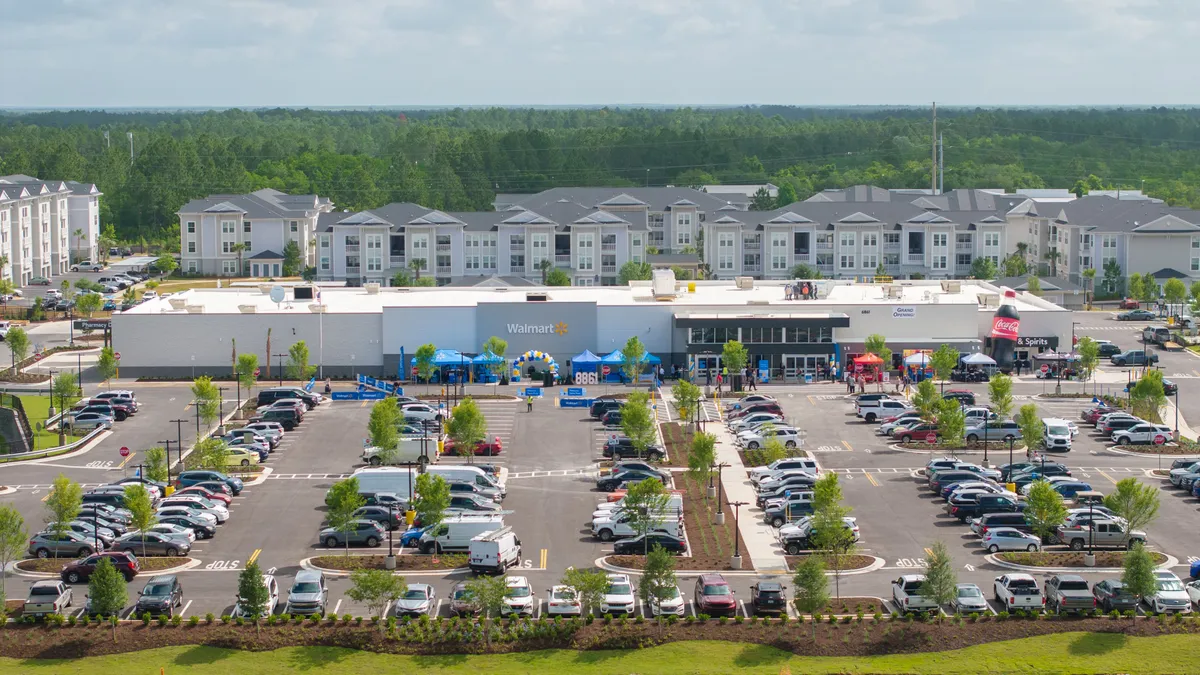Dive Brief:
- Hy-Vee plans to slow its growth in the Twin Cities, according to the Star Tribune. The retailer, which built its first store in the region in 2015, opened its eighth area location this week.
- CEO Randy Edeker told the Star Tribune that Hy-Vee wants to step back and assess its approach to the market. A key consideration, he said, is the size of its stores in the region, which currently range from 90,000 to 105,000 square feet. The retailer announced last week it would delay construction of a distribution center in Austin, Minnesota in light of its slowdown.
- Hy-Vee’s capital expenditures budget, Edeker said, is the highest it’s ever been. In recent months, the retailer has invested in new formats, its Market Grille restaurants and in becoming the largest franchisee of the Wahlburgers restaurant chain. Edeker said Hy-Vee’s status as a private company has helped it move quickly and outspend rivals.
Dive Insight:
Hy-Vee’s plan to "tap the brakes", as the Star Tribune put it, in the Twin Cities might seem foolish given the growth opportunities the company has in that market. By all accounts, Hy-Vee is making a splash, and established players like Target and market share leader Cub Foods scrambling to respond.
However, Hy-Vee is choosing to be prudent in its approach. Rather than be fast, it wants to be right.
Hy-Vee’s focus on new formats, including its 10,000 square-foot Fast & Fresh grocery-convenience hybrid, has the retailer thinking smaller. Could stores between 12,000 and 50,000 square feet perform better than the 90,000 to 105,000 square-foot stores Hy-Vee is currently building? These limited-size locations certainly appeal to consumer preferences for quick trips. They’re also easier to place in metropolitan markets, and have lower overhead costs. The benefits are worthy of further examination, which is exactly what Hy-Vee is doing.
As Edeker pointed out, Hy-Vee’s move is not without precedent. Kroger has slowed its store growth recently, as have Walmart and Trader Joe’s. With pricing pressure and industry competition at unprecedented levels, retailers are choosing to invest in their existing stores rather than risk spreading themselves too thin.
On a larger scale, it seems Hy-Vee is changing its growth strategy slightly. In addition to slowing its store development, the Midwestern grocer announced this week it will convert some of its Market Grille restaurants to Market Grille Express formats, which feature more self-serve options. By the end of this month, according to the Register, the grocer will operate 43 Market Grille and 76 Market Grille Express spots.
Along with other recent moves centered on tapping into new revenue streams — including becoming the largest franchisee of Wahlburgers restaurants — Hy-Vee seems to be focused on redefining itself as a food retailer.
Slowing growth in the Twin Cities will give Hy-Vee an opportunity to chart an effective course for the future. But the company won’t want to wait too long to get moving again. Cub Foods, for one, is investing heavily to retain its market share lead. The Supervalu-owned chain is remodeling stores, and recently introduced new Quick & Easy meals at a 25% discount.










